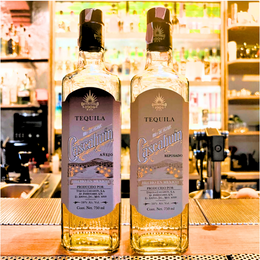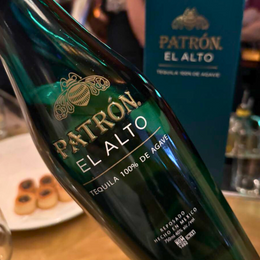
One of the earliest Mesoamerican cultures, predating even the Maya and Aztec civilizations, are the Zapotecs - an indigenous people of Mexico who primarily live in the southern state of Oaxaca.
The Zapotecs have a rich history of mezcal distillation, dating back many centuries. The exact origins of mezcal are unclear, but when the Spanish brought knowledge of distillation from Europe to the Americas, the Zapotecs were one of the first groups to learn about distillation and to adapt it to local resources – particularly the agave plant.

The Zapotecs in the 1500s combined their ancestral knowledge of agave cultivation and fermentation with the newly introduced distillation methods. This allowed then to create a unique spirit that has evolved into the mezcal we know today. This involves harvesting mature agave, roasting the agave hearts (or piñas) in underground pits, crushing the roasted piñas using a stone wheel, fermenting the extracted juice before distilling the alcoholic mixture. (Unlike tequila, the piñas of mezcals are roasted. This gives mezcals an aromatic smoky flavour not found in tequila.)

Tequila vs Mezcal: What is the difference?
As an ancestral spirit, mezcal production is deeply intertwined with Zapotec culture and traditions. The spirit was often used in religious ceremonies, as an offering to the gods, and as a means of bringing communities together during social gatherings and celebrations. Mezcal even served as a form of currency and as a symbol of identity for the Zapotec people.
Both mezcal and tequila have been enjoyed throughout Mexico since they were invented However, tequila is the more widely known and consumed of the two outside of Mexico. In the late 1800s, tequila had already become mass-produced on a commercial scale when tequila merchant Don Cenobio Sauza established a large-scale distillery in Jalisco and began exporting his tequila to the United States.
Despite the similar complexity of mezcal as a spirit, for centuries, mezcal production still remained a small-scale, artisanal endeavour amongst groups like the Zapotecs, with each village and family developing their own techniques and recipes.

Here is where Del Maguey comes in. Founded in 1995 by Ron Cooper, a modern artist from Los Angeles, the Del Maguey brand gave these mezcal-producing Zapotec villages a commercial voice beyond their villages. The brand bottles mezcals from more than 9 villages, offering twenty different expressions of single-village mezcal that showcase the traditional craftsmanship and unique terroir of each village.
By emphasising the single-village and artisanal quality of these mezcals, Del Maguey is credited for being one of the first brands that helped to bring mezcals to the awareness of American consumers and international audience.

Read the fascinating story of how Del Maguey Mezcal was founded
The expression we’re tasting today is one of Del Maguey’s rarer and more sought-after expression of mezcal: the Del Maguey Pechuga.

The Pechuga mezcal is made in the village of Santa Catarina Minas in Oaxaca, using a traditional method that has been passed down through generations. And for a hint on its unique distillation process, just look to its name. The word “pechuga” means “breast” in Spanish which refers to the use of poultry breast.
The production of Pechuga mezcal begins with the standard process for making mezcal, which includes roasting, crushing, fermenting, and distilling the agave plant. However, Pechuga undergoes an additional third distillation, during which various fruits and spices are added to the still, along with a large slab of raw chicken breast.
With skin removed and bone structure still intact, the chicken breast is hung within the still, allowing the vapours to interact with the meat during the distillation process and fall back into the roiling mixture.
Interestingly, during this round of distillation, the spirit is also rectified (much like a gin) with wild fruits – about 50 kilograms of mountain apples, plums, plantain bananas, pineapples, almonds and some uncooked white rice. Due to the need for these wild fruits, the production season occurs right at the end and beginning of the year, only during the December – January period.

Why the breast? I imagine the brand managers of Del Maguey would have asked the villagers at Santa Catarina Minas out of fascination:
Upon completion, the dried breast is removed from the still and hung in the family altar room of the producer – the most important space in the house. The cooked fruits at the bottom of the still are then shared with the rest of the village!
Now let’s give this unusual spirit a taste!
Del Maguey Pechuga, Santa Catarina Minas Village, 49% ABV – Review

Nose: Floral, mineral and lightly savoury all at once! The initial wave presents a delicate balance of very light green apples and jasmine floral notes. Beneath the fruitiness, subtle hints of clay, earthy agave and woodsmoke begin to emerge, then a hint of savoury elements – thinly-sliced grocery store prosciutto and overnight brined meats. A touch of sea spray giving this a very coastal feel. This is a very harmonious and multi-faceted nose with quite a bit more going on than a more straightforward Del Maguey Vida which is dominated by agave and smoke.
Palate: Equally complex and fascinating. The fruitiness hinted at in the nose comes forth in a gradual build-up, showcasing a medley of bright tropical fruit flavours – lychees and mild pink guava, alongside the clean tartness of green apples. The fruity notes are balanced by a gentle sweet smokiness and a slightly herbaceous note of tarragon and basil, and warmth and subtle spiciness of cinnamon and cloves.
Once again, an oily savoury element weaves its way through the profile, evoking chicken consommé and oily, savoury Herbal Emperor Chicken (or just herbal chicken 药材鸡) - a lovely umami quality that really enhances this this flavour profile.
The texture is definitely smoother and rounder than many mezcals – which is likely due to its third distillation. The unique combination of fruits, gentle smokiness and brine also really evokes an Islay Scotch with a peaty, coastal quality – more specifically a cask strength Caol Ila.
Finish: The finish is long, smooth, and satisfying. Citrusy acidity emerges on the middle of the tongue and fades along with lingering notes of light brininess, minerality and pepperiness.

My Thoughts
This is a richly flavoured and really memorable mezcal that lives up to the Pechuga hype. The producer’s notes with its mention of basil, lemon, ocean, fruit and a Scotch-like smokiness are really quite spot-on. There is so much to love about this, from its ease of drinking, to its deft integration of fruit, smoke and umami, which offers a tasting experience that is both captivating and memorable. In comparison to many of its siblings, the Pechuga not only seems more complex and nuanced, but is also smoother and friendlier on the palate.
The spirit serves as a testament to the rich cultural heritage of the Zapotec people and the importance of preserving and celebrating authentic mezcal production. If not for Ron Cooper’s discovery of mezcal, who knows whether this amazing spirit would be lost to the ages!
Whether you are a mezcal enthusiast or new to the category, I believe this is a bottle well worth trying. So long as you wish to explore the world of mezcal and taste a fascinating piece of Oaxacan tradition, the Del Maguey Pechuga is a journey well worth embarking upon.
🗺️
(A world map.)
This unique and authentic expression is an invitation to embark on an exploratory journey into the world of mezcal.
---
If you'd like to try it for yourself, you can pick it up at the major online retailer Master of Malt (ships internationally).
Read more reviews: Whisky | Craft Beer | Rum | Gin | Sake | Tequila | Baijiu | Liqueurs & Others
---

@CharsiuCharlie







